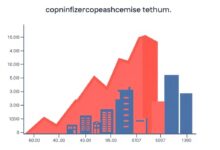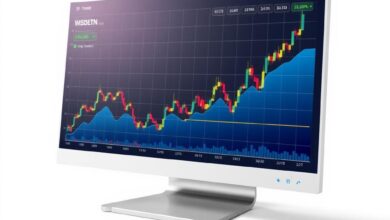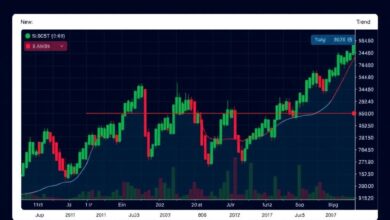Should you invest during a recession?

Consider reallocating resources toward undervalued assets during a market slump. An economic crisis often presents unique chances to acquire shares at significantly reduced prices, enabling potential long-term gains when recovery occurs.
Assess the risk-reward ratio meticulously. Focus on sectors historically resilient in downturns, such as utilities and healthcare, which tend to maintain stability and provide dividends even amidst volatility. This approach not only mitigates exposure but also positions one favorably for future rebounds.
Engage in thorough research to identify companies with strong fundamentals that may be temporarily overlooked. These hidden gems can thrive post-crisis, transforming initial investments into substantial profits as confidence returns to the marketplace.
Lastly, diversify your portfolio strategically. Spreading investments across various industries and asset classes can cushion against potential losses while capitalizing on sector-specific recoveries. Embrace this period of uncertainty as an opportunity to reinforce financial resilience and ensure long-term success.
Identifying Safe-Haven Assets
Focus on gold, U.S. Treasury bonds, and high-quality dividend-paying stocks as your primary safe-haven options. These assets historically perform well in times of market volatility.
- Gold: Typically viewed as a hedge against inflation and currency devaluation. Monitor the timing of purchases to capitalize on price dips.
- Treasury Bonds: U.S. government securities offer stability. Look for long-term bonds to lock in returns while minimizing risk during uncertain times.
- Blue-Chip Stocks: Companies with robust balance sheets and consistent dividends are less susceptible to economic fluctuations. Focus on sectors like utilities and consumer staples.
Diversification across these categories can mitigate risks associated with market downturns. Assess the opportunity to shift portions of your portfolio into these assets when indicators suggest increased volatility.
- Review historical performance data to identify trends in asset safety during prior crises.
- Regularly reassess your asset allocation based on economic indicators and market sentiment.
- Avoid over-concentration in any single asset class to spread risk effectively.
Timing is crucial; be prepared to adjust positions as new data emerges or conditions evolve. Engage with financial analysis tools that provide insights into market shifts, enabling informed decisions about reallocating resources towards safer investments.
Utilizing Dollar-Cost Averaging
Implement a dollar-cost averaging approach by consistently investing a fixed amount at regular intervals, irrespective of market conditions. This method mitigates the risk associated with timing the market, especially during an economic crisis. Instead of attempting to guess the optimal entry point, focus on accumulating assets over time.
This strategy transforms volatility into an opportunity. In downturns, prices often decline, allowing for increased purchasing power with each investment. By spreading out purchases, you reduce the impact of short-term fluctuations and avoid the pitfalls of emotional decision-making.
Establish a disciplined schedule–weekly or monthly investments can yield significant advantages as asset prices recover post-crisis. Historical data suggests that markets tend to rebound after downturns, making consistent contributions advantageous in the long run.
Moreover, this method enables investors to build wealth without overexposing themselves to risk during turbulent times. Maintain focus on your investment goals and adjust contributions based on personal financial circumstances rather than market sentiment.
Exploring Dividend Stocks
Focus on established companies that consistently pay dividends, especially during a market slump. Look for firms with a history of increasing their payouts over time, as this indicates stability and resilience. Analyze sectors such as utilities, consumer staples, and healthcare; these tend to weather financial storms better than others.
Consider the dividend yield as a key metric. A higher yield can signal attractive opportunities in a falling market. However, ensure the company’s payout ratio remains reasonable–typically under 60% of earnings–to safeguard against potential cuts. Prioritize firms with strong cash flow and low debt levels to mitigate risks associated with an economic crisis.
Keep an eye on timing; acquiring dividend stocks when prices dip can maximize your future income potential. Reinvest dividends to harness compound growth, allowing you to benefit from both capital appreciation and passive income streams over time.
Monitor dividend announcements closely; any cut or suspension could foreshadow deeper issues within the company. Use this information to adjust your portfolio proactively, ensuring you’re not holding onto assets that may falter in adverse conditions.
Finally, diversify your holdings across various industries to spread risk effectively. This approach cushions against sector-specific downturns and enhances overall stability in your investment choices.
Rebalancing Your Portfolio
Adjust your asset allocation in response to significant market shifts. A market downturn often distorts the balance of a portfolio, pushing higher-risk assets down while safer investments may hold their value or even appreciate. Analyze your current exposure and consider whether you need to increase holdings in defensive sectors like utilities or consumer staples that tend to perform better in turbulent times.
Take advantage of this moment as an opportunity to realign your investments with your long-term objectives. For instance, if equities have decreased in value, selling a portion of safer assets can enable you to buy undervalued stocks at a discount, enhancing future growth potential once recovery begins.
Keep risk tolerance in mind during this process. If volatility has increased your anxiety about losses, it may be wise to shift towards more stable options. Conversely, if you’re comfortable with risk, capitalize on discounted prices by reallocating funds into growth-oriented stocks or sectors poised for rebound after the crisis.
Review performance metrics regularly. Establish a schedule–quarterly or semi-annually–to assess whether adjustments are necessary based on changing market conditions and personal financial goals. Consistent rebalancing helps mitigate risks associated with overexposure to any particular asset class and maintains alignment with your strategic vision.







